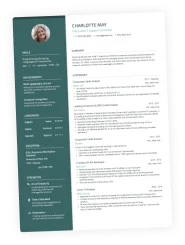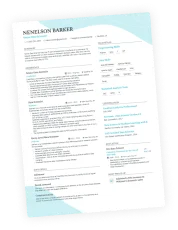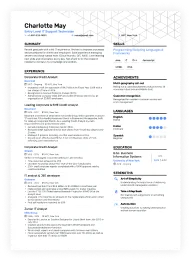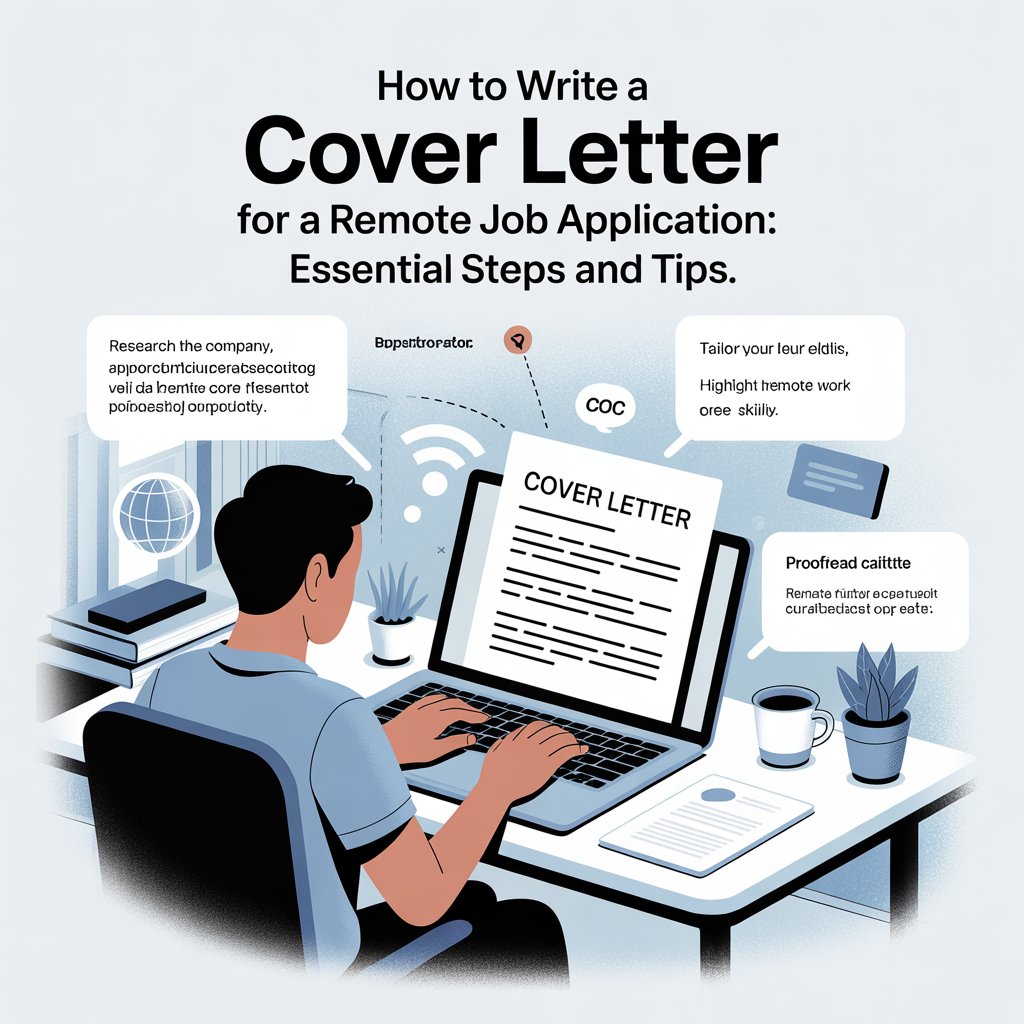Let’s be real: nailing a proposal cover letter is pretty much non-negotiable if you want to grab an employer’s attention. A winning proposal cover letter doesn’t just list your skills—it actually shows why you’re a great match and frames your experience around what the employer is really looking for. With a little bit of customization and a few practical tweaks, almost anyone can boost their odds of getting noticed (and hopefully snagging more interviews).

Here’s what you’ll get in this article: detailed, real-world examples, plus templates you can actually use to write stronger proposal cover letters. There are sample letters, customizable templates, resume snippets, and a handful of tips for making a memorable first impression. I’ll also throw in some suggestions for using handy tools—like RoboApply’s cover letter scoring and job app automation—if you want to make things a bit less painful.
Try RoboApply for free.
What Is a Proposal Cover Letter?
A proposal cover letter is basically a formal intro that you send with your job application or business proposal. It’s your chance to introduce yourself, highlight what actually matters, and set the tone for what could be a working relationship. Employers skim these to see if you’re a match—sometimes in just a few seconds.
Purpose of a Cover Letter
Think of the cover letter as a personalized introduction—the icebreaker. Your main goal is to catch the reader’s eye right away and make it clear why you’re a strong fit for the job. It’s also your shot to go beyond the resume and connect the dots between your experience and what they’re actually looking for.
Let’s say you’re applying for a project manager gig. Instead of just listing “project manager” on your resume, you could use the cover letter to talk about leading cross-functional teams or delivering tough projects on time. That way, the employer sees your value without having to guess. Some folks use RoboApply to whip up tailored cover letters that hit all the right notes and boost their chances with resume scoring.
Key Elements of Effective Cover Letters
The best proposal cover letters usually hit a few key points:
- Formal greeting: If you know the hiring manager’s name, use it.
- Clear intro: Say which job you’re after and give a quick reason why you care.
- Specific examples: Don’t just say you’re great—show it. Maybe you boosted sales by 20%, or launched a new process.
- Alignment with the job: Tie your skills and experience directly to what the employer wants.
- Closing statement: Wrap up by reaffirming your interest and giving your contact info.
A well-organized letter just makes you look more put together. Tools like RoboApply can help you personalize and automate sections so you don’t have to start from scratch every time. Try RoboApply for free.
Essential Components of a Winning Proposal Cover Letter
A winning proposal cover letter is always tailored, highlights your real strengths, and makes it obvious how you fit the employer’s needs. If you focus on these areas, you’re way more likely to leave a strong impression.
Personalization and Addressing the Recipient
Personalization is a must. Using the hiring manager’s name instead of a generic greeting shows you actually care. If you don’t know the name, dig around on LinkedIn or the company site—it’s usually worth the effort.
Example opening lines:
- Correct: Dear Ms. Johnson,
- Incorrect: To whom it may concern,
A personalized greeting makes the letter feel less like spam. If you just can’t find a name, mentioning the department (“Dear Marketing Team,”) is a decent backup. Try to reference the specific position or project right up front.
RoboApply can even help pick out good greetings and track down the right contact for you.
Clear Value Proposition
You’ve got to spell out what makes you the best pick—without just dumping your whole resume. Pick two or three strengths that fit what the employer wants, and tie them back to the job.
Example:
“With five years managing IT projects and a track record of cutting delivery times by 15%, I’m confident I can help Company XYZ keep growing.”
A quick table helps show the match:
| Employer Needs | Applicant Strengths |
|---|---|
| IT project management experience | Managed multiple IT projects |
| Proven results | Cut delivery time by 15% |
| Communication skills | Presented to cross-functional teams |
RoboApply can help you spot the right strengths to mention for each job.
Relevant Experience and Credentials
Don’t just list jobs—connect your experience to what they want. Name specific roles, certifications, or projects that match the posting.
Example:
“At ABC Solutions, I led a team of five engineers and delivered cloud migration projects on time and under budget. I’m PMP-certified and have helped Fortune 500 clients streamline IT infrastructure.”
Certifications like PMP or AWS Certified Solutions Architect are worth highlighting. Numbers matter more than vague claims, so use them when you can.
Workflow tip: RoboApply can help you match up your credentials with each job, so you’re not reinventing the wheel every time.
Professional Tone and Language
You want to sound professional, but not robotic. Keep it formal, but don’t be afraid to let a little personality show. Skip the slang and avoid clichés.
Some quick tips:
- Be direct and clear.
- Cut the fluff and exaggeration.
- Proofread for grammar and spelling.
Example:
“I’m eager to bring my analytical skills and collaborative mindset to DEF Corporation’s project management team.”
A polished tone shows you’re serious. Digital tools can help with proofreading and making sure your language fits each employer’s vibe.
Try RoboApply for free.
Step-By-Step Guide to Writing a Proposal Cover Letter
A solid proposal cover letter lets you make a clear, positive impression. Focus on doing your research, getting the structure right, and editing thoroughly if you want to stand out.
Researching the Client or Organization
Before you write a word, do some homework on the company or client. Look at their mission, recent work, and what they value. Check out their website, reviews, and social media. You’ll usually find a few nuggets you can mention.
Jot down any challenges or needs you spot. Try to mention these in your letter—it shows you actually care and aren’t just blasting out the same letter everywhere. The more specific, the better.
If you’re going for a marketing role, for example, mention results from campaigns like the ones they run. Tailored letters almost always beat generic ones.
Structuring Your Letter
A good proposal cover letter follows a clear format that’s easy to read. Start with your contact info, then the date, then the company’s details. Use a real greeting if you can.
First paragraph: say which job you want and why you’re interested. Next, explain how your skills and experience fit the job. Use bullet points to highlight big wins, like:
- Increased sales by 30% in six months
- Managed a team of 10
- Certified in Google Analytics and SEO
Wrap up by thanking the reader and inviting them to connect. RoboApply can score your letter and help you rewrite it for better odds.
Drafting and Editing
For your first draft, write like you speak—keep it clear and direct. Skip the jargon and buzzwords. Focus on how you can solve the employer’s problems.
When you’re done, read it out loud. You’ll catch awkward spots or mistakes that way. Edit for clarity and length—try not to go over one page. If you can, get a friend to proofread, or run it through a digital tool for a final check.
RoboApply can help you spot errors and polish your letter, so you don’t have to stress over every detail.
Try RoboApply for free.
Formatting Tips for Maximum Impact
A sharp-looking proposal cover letter can absolutely help you stand out. Structure, just enough detail, and a clean, professional look all matter.
Organizing Content Logically
Keep your letter organized so it’s easy to skim. Start with a formal greeting and a direct opener. Let them know right away which job you want and why you’re interested.
Break the letter into short sections:
- Introduction
- Relevant skills and experience
- Why you want to work there
- Final call to action
Bullet points are your friend for highlighting achievements:
- Coordinated cross-department projects under tight deadlines
- Trained and led a team of 12 new hires
Use bold or italics for important stuff—job titles, certifications, results. RoboApply can help you reorganize or rewrite sections to save time, especially if you’re applying to a bunch of jobs.
Optimal Length and Layout
Keep your letter to one page—ideally 250 to 400 words. Big blocks of text are tough to read, so break things up into short paragraphs.
Use clear headings, plenty of spacing, and a simple font (Arial or Calibri, 11–12 pt) for readability. Here’s a basic layout:
| Section | Purpose |
|---|---|
| Contact Information | Name, address, email, phone number |
| Date and Greeting | Date, hiring manager’s name |
| Introduction | Position applied for, brief overview |
| Main Body | Key skills, achievements, fit for role |
| Conclusion | Next steps, thank you, signature |
Templates and layout guides from Loopio’s proposal cover letter guide or RoboApply can help you get the formatting right. Try RoboApply for free.
Common Mistakes to Avoid
Let’s be honest—writing a proposal cover letter isn’t exactly thrilling, and plenty of folks trip over the same avoidable mistakes. Here’s a quick rundown of the most common blunders—and a few thoughts on how to sidestep them:
1. Using Generic Language
There’s nothing that screams “I didn’t try” like opening with “To whom it may concern” or “I am writing to apply for the position.” If you want your letter to actually get read, mention the company by name and talk about the specific role. It’s a small thing, but it helps.
2. Rehashing Your Resume
If you just copy-paste your job history, you’re wasting everyone’s time (including your own). The cover letter is your chance to share a story, drop in an achievement, or explain why this company matters to you.
Instead of:
“I worked at Company X as a manager for two years.”
Try:
“At Company X, she led a team of 12 and improved customer satisfaction by 18% through a staff training program.”
3. Skimming Over Instructions
Job postings sometimes sneak in little requests—like asking you to answer a question or mention a specific detail. Miss it, and you might be out before you’re even in. Triple-check the posting and do what it asks.
4. Sloppy Grammar or Formatting
Typos, weird spacing, or bad formatting? That’s an easy way to land in the “no” pile. Run your letter through a spellchecker or use a template (RoboApply has a few handy ones) to clean things up.
5. Sending the Same Letter Everywhere
Hiring managers can spot a recycled letter a mile away. Take a few minutes to mention something unique about each company or role. It’s worth the extra effort.
If you want a shortcut, RoboApply can help you whip up and track cover letters for free.
5 Winning Proposal Cover Letter Examples
A solid proposal cover letter gets right to the point: what you bring to the table, what the recipient needs, and why you’re a good fit. It’s not one-size-fits-all—each situation needs its own details and a bit of personality if you want to stand out.
Example for Business Proposal
When you’re pitching a business proposal, you need to introduce yourself, show that you “get” the client’s needs, and explain why your solution makes sense. Always start with a real greeting—names are better than “Dear Sir or Madam.”
Business Proposal Cover Letter Example:
Dear Ms. Jones,
Thank you for the opportunity to submit a proposal for your corporate training needs. At ABC Learning Solutions, we understand your goal to improve employee performance and engagement.
Our certified trainers provide tailored workshops in communication, leadership, and project management. We use interactive methods and proven strategies that fit your company culture. Our previous work with DEF Corp increased productivity by 18% in six months.
We are happy to discuss your schedule and budget to ensure the best fit. Please see our attached proposal for details.
Sincerely,
Sam Lee
Director, ABC Learning Solutions
sam@abclearning.com
RoboApply’s tools make it easier to draft, save, and tweak cover letters for business proposals—so you’re not starting from scratch every time.
Example for Grant Application
Grant cover letters are all about showing need and spelling out how the money will make a difference. Reviewers want clear goals, real numbers, and a sense that you care about their mission.
Grant Application Cover Letter Template:
Dear Review Committee,
On behalf of GHI Youth Center, I am writing to request funding for our “STEAM Futures” after-school program. Our goal is to provide underprivileged students with access to science, technology, engineering, art, and math resources they otherwise would not have.
Last year, over 300 local youth participated and improved their grades. Funding from your organization will allow us to expand our program, provide supplies, and train additional mentors. We believe this will help close educational gaps in our community.
Thank you for considering our request. The full proposal is attached.
Best regards,
Maria Patel
Program Director, GHI Youth Center
maria.patel@ghiyc.org
If you’re applying for grants, resume scoring tools like RoboApply can help you match your letter to what funders care about most.
Example for Freelance Project
Freelancers need to get to the point—quickly. Show you understand the client’s needs, mention your experience, and give a rough idea of how you’ll work and what it’ll cost.
Freelance Project Cover Letter Example:
Hello Mr. Carter,
Thank you for posting your need for a website redesign. I am a freelance web designer with five years of experience helping small businesses like yours build user-friendly, high-converting websites.
Based on your project details, I suggest a three-week timeline for the redesign, including user research, new layouts, and optimized content. My recent work for JK Stores led to a 25% boost in online sales.
I look forward to discussing your vision and how I can help. My contact details are below, and my portfolio is attached.
Best,
Alex Kim
alex@kimsites.com
Freelancers often juggle lots of proposals. Tools like RoboApply help you keep track of what you’ve sent and let you tweak templates so you’re not reinventing the wheel every time.
Example for Partnership Proposal
A partnership proposal cover letter is your chance to show you understand the other company’s goals and how working together helps both sides. It’s not just about what you want—it’s about what you can do together.
Partnership Proposal Cover Letter Example:
Dear Ms. Ramos,
I am reaching out on behalf of CleanTech Solutions to explore a partnership with GreenBuild Supplies. Our eco-friendly cleaning products have helped builders reduce waste and meet new environmental standards.
We believe that working together can help you offer greener options to your clients while we expand our market reach. Our proposal outlines how joint marketing and co-branded events can drive growth for both companies.
Please review the attached materials for program details and let us know your availability for a short meeting.
Sincerely,
Taylor Johnson
Business Development Manager, CleanTech Solutions
t.johnson@cleantech.com
If you’re moving into partnership roles, RoboApply can help you keep your outreach organized and tailor your letters for each opportunity.
Example for Nonprofit Initiative
A nonprofit initiative cover letter should connect emotionally, but still get to the point and include a clear call to action.
Nonprofit Initiative Cover Letter Example:
Dear Ms. Adams,
We appreciate all the work the BrightStart Foundation does for children’s literacy. At Read Together, we are launching a new mobile library initiative to bring books directly to underserved neighborhoods.
This program is designed to address the lack of reading resources among local families. We seek to collaborate with your team for event planning, volunteer training, and book donations. Together, we can increase access to literacy for hundreds of children.
I am available for a call or meeting at your convenience. Please find our full proposal attached.
Warm regards,
Jordan Ellis
Director, Read Together
jordan.ellis@readtogether.org
Writing for nonprofits can be a grind—online tools make it easier to draft and send out multiple versions fast.
Try RoboApply for free
How to Tailor Your Cover Letter for Different Audiences
Personalizing a cover letter can really make you stand out. Adjusting the tone, word choice, and focus helps you match what each employer actually cares about.
Adapting Tone and Language
Getting the tone right is half the battle. If you’re applying to a law firm or a bank, keep it formal—think “Dear Hiring Manager,” and wrap up with “Sincerely.” For a creative agency or startup, it’s totally fine to be a little more casual. “Hello Team” or “Best” at the end can sound more natural.
You’ll want to echo the company’s language, too. Browse their website, read the job ad, and pick up on the words they use. If they talk about “innovation” or “team spirit,” mention those. And honestly, clear and simple beats jargon—no need to show off with fancy words.
Tools like RoboApply can analyze postings and help you adjust your letter’s tone and language to fit.
Highlighting Relevant Skills
It’s smart to focus on what matters most for the job. Compare the job description with your own background, then highlight the skills that match up. For IT jobs, spotlight technical abilities like Python or cloud platforms. For customer support, talk about communication and patience.
A quick table can make your skills pop:
| Job Requirement | Your Matching Skill | Example |
|---|---|---|
| Project Management | Managed team of 5 on 3 projects | Delivered all on time and under budget |
| Data Analysis | Advanced Excel, SQL | Automated weekly reports |
Specific examples matter. Show, don’t just tell. RoboApply can even score your resume and suggest which skills to highlight for each job.
Try RoboApply for free.
Final Review and Submission Recommendations
Before you hit submit, give your cover letter one last look. Double-check for typos, grammar slips, and make sure your contact info is right. A well-written letter is just easier to read—and it sticks with the reader.
Here’s a quick checklist to run through:
- Is your contact information correct at the top?
- Did you address the right person or company?
- Are your main points clear and relevant?
- Is the formatting clean and easy on the eyes?
- Did you catch all the typos and grammar mistakes?
Pro tip: Reading out loud is surprisingly helpful for spotting awkward lines or errors.
Digital tools can help with the final polish—spellcheckers, grammar checkers, and platforms like RoboApply for templates and resume scoring.
Here’s a simple workflow to keep you on track:
| Step | Action | Tool/Method |
|---|---|---|
| Proofreading | Read for errors | Spellcheck, Manual |
| Structure Check | Match template format | RoboApply, Guide |
| Content Relevance | Verify skills and fit | Checklist, Feedback |
| Personalization | Confirm details and names | Manual |
If you’re applying on LinkedIn or Indeed, RoboApply can save you time by automating repetitive steps and helping you tailor your content for each job.
Try RoboApply for free.
Frequently Asked Questions
A strong proposal cover letter lays out the project goals, addresses the prospect’s needs, and shows what makes you unique. Using real examples and a clear structure helps you look professional and serious about the opportunity.
What are the key components of an effective proposal cover letter?
You’ll want to start with a clear intro and your contact info. Grab their attention right off the bat.
Then, talk about the problem or opportunity, and explain how your proposal solves it. Measurable results, specific goals, and a quick summary of relevant experience all help you stand out. Finish with a call to action and your signature for a polished close. Check out more tips on successful proposal cover letters.
Can you provide a template for a proposal cover letter?
Sure thing. Here’s a template for a well-structured proposal cover letter:
[Your Name]
[Your Address]
[City, State, Zip]
[Email Address]
[Phone Number]
[Date]
[Recipient's Name]
[Recipient’s Title]
[Company/Organization Name]
[Company Address]
[City, State, Zip]
Dear [Recipient's Name],
I am pleased to submit my proposal for [Project Title]. With extensive experience in [Relevant Field] and a record of [Notable Achievement], I am confident in my ability to deliver results that align with your objectives.
I understand your organization is seeking [Main Project Goal or Problem]. My approach will address this by [Brief Overview of Method], ensuring [Specific, Measurable Outcome]. For example, I recently completed a similar project for [Previous Client/Employer], which resulted in [Quantified Result].
I look forward to discussing how my skills can contribute to your project’s success.
Thank you for considering my application. Please feel free to contact me with any questions.
Sincerely,
[Your Name]
If you want more examples or downloadable templates, take a look at OpenAsset’s proposal cover letter guide.
How should I format a cover letter for a project proposal submission?
Honestly, there’s no need to overthink it—just stick to a clear structure: start with a header that lists both your contact info and the recipient’s, then a greeting (yep, formal still works best), and a short intro paragraph. After that, dive into the body with a couple of paragraphs about your qualifications and approach. Wrap it up with a closing statement that gets straight to the point.
Pick an easy-to-read font, keep your spacing standard, and stick to one-inch margins—nothing fancy. Oh, and if you’re sending it online, save the letter as a PDF so your formatting doesn’t get all weird.
What tips can you suggest for writing a compelling business proposal cover letter?
Kick things off with a punchy opening sentence that shows you actually care about the project (and aren’t just copy-pasting). Work in SMART goals—you know, stuff that’s Specific, Measurable, Achievable, Relevant, and Time-bound—to explain how you’ll deliver real value.
Highlight a couple of accomplishments that are genuinely relevant. Ditch the generic fluff and make sure each letter feels like it was written for this exact job or project. If you’re stuck, tools like RoboApply can help you polish up your letter and keep the formatting on track.
How do I tailor a cover letter to a bid proposal effectively?
First off, do your homework—dig into the company and the project requirements. Don’t be shy about echoing the client’s priorities and using keywords from the posting.
Call out unique skills or experience that really line up with what they’re looking for. Give concrete examples from your past to show you get the challenges and can actually tackle them. Loopio’s pretty clear about the need to customize every proposal, and honestly, they’re not wrong.
Are there common mistakes to avoid when writing a proposal cover letter?
Absolutely—there are a few pitfalls that trip people up more often than you’d think. Using the same, cookie-cutter letter for every application? That’s a big one. Skipping over details from the RFP or letting typos sneak in can really hurt your chances, too. And honestly, nobody wants to slog through huge blocks of text or read vague, generic statements that don’t say much.
Take a little extra time to proofread, tailor your letter to the specific job, and keep things clear and to the point. If you’re worried about missing something important, tools like RoboApply can help catch what you might overlook and make sure you’re covering all the bases, no matter which site you’re applying through.
Give RoboApply a shot for free.












